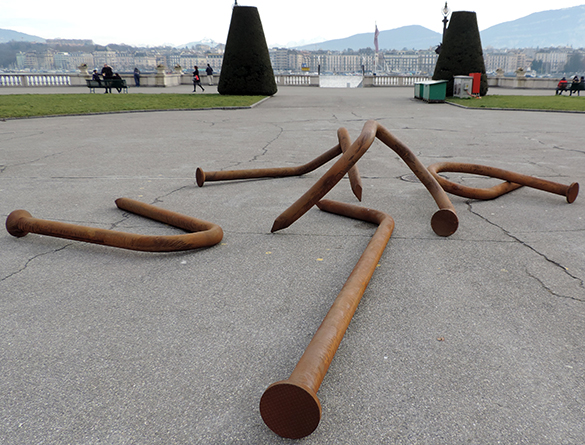
I am at entrance of the World Health Organisation. People of all nationalities hurry by with laptops and bulging files. There is a sculpture that I too have hurried by over the years. Today, I have time to take a closer look.
When it comes to depicting the human form, what makes the difference between a good sculpture and a great sculpture is what one sees in the eyes. The eyes are, after all, that part of another person at which we look most intently. What I see here is a man and a boy. Both are clearly African. The man’s eyes are clouded over; dead. The boy sees clearly but his expression is that of determined resignation to his lot.

A son leads his blind father with the aid of a stick. They are both caught in grinding poverty. The sculpture marks the near-elimination of the parasite causing river blindness (Onchocerciasis) in eleven West African countries through the Onchocerciasis Control Programme. There is an element of hope for the generation who might, thanks to the combined efforts of multiple agencies guided by the WHO, be free of this terrible disease. This noble institution gets a political bashing on many fronts but it is well to remember its successes. And these successes are brought about by committed people who hurry by with laptops and bulging files. All that said, this commemorative work is technically accomplished, full of narrative and eye-smartingly poignant. I should have stopped and taken all this in before.
It is a clear bright spring day. I take my time snapping a few photos. I look for the little plaque that gives the name of the master sculptor responsible for this beautiful stuff. There is no plaque. There is no recognition of the genius who made it. Does anyone know whose work this is?




